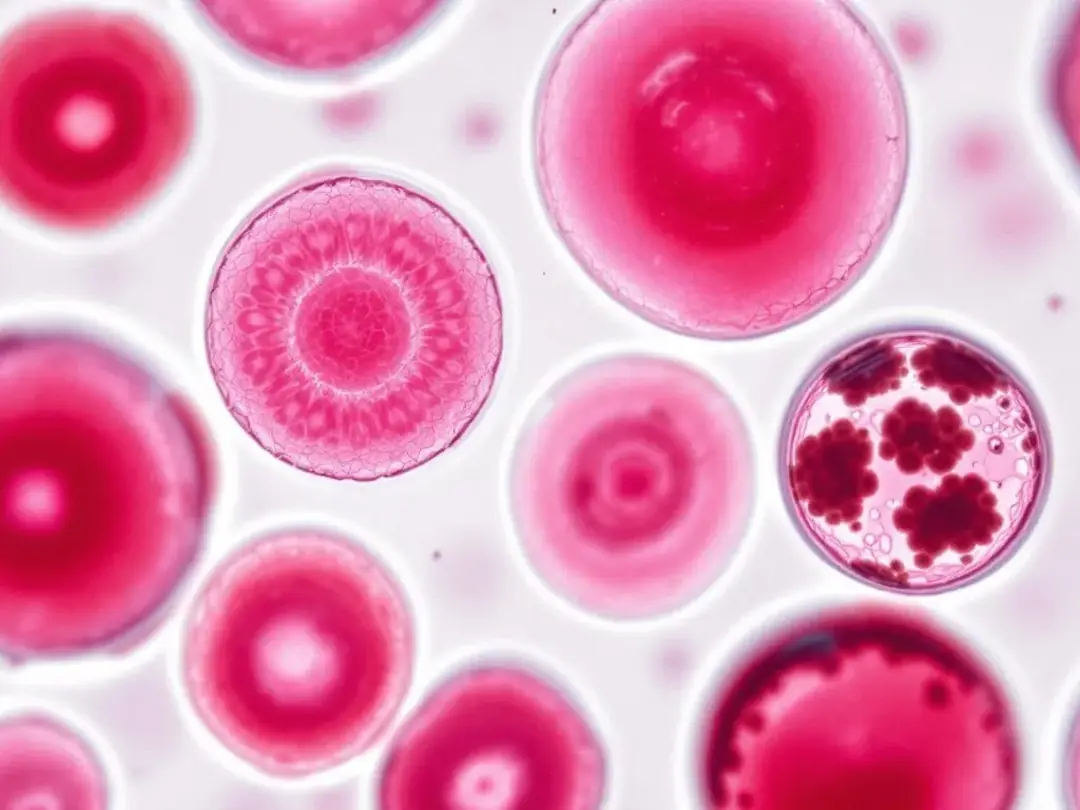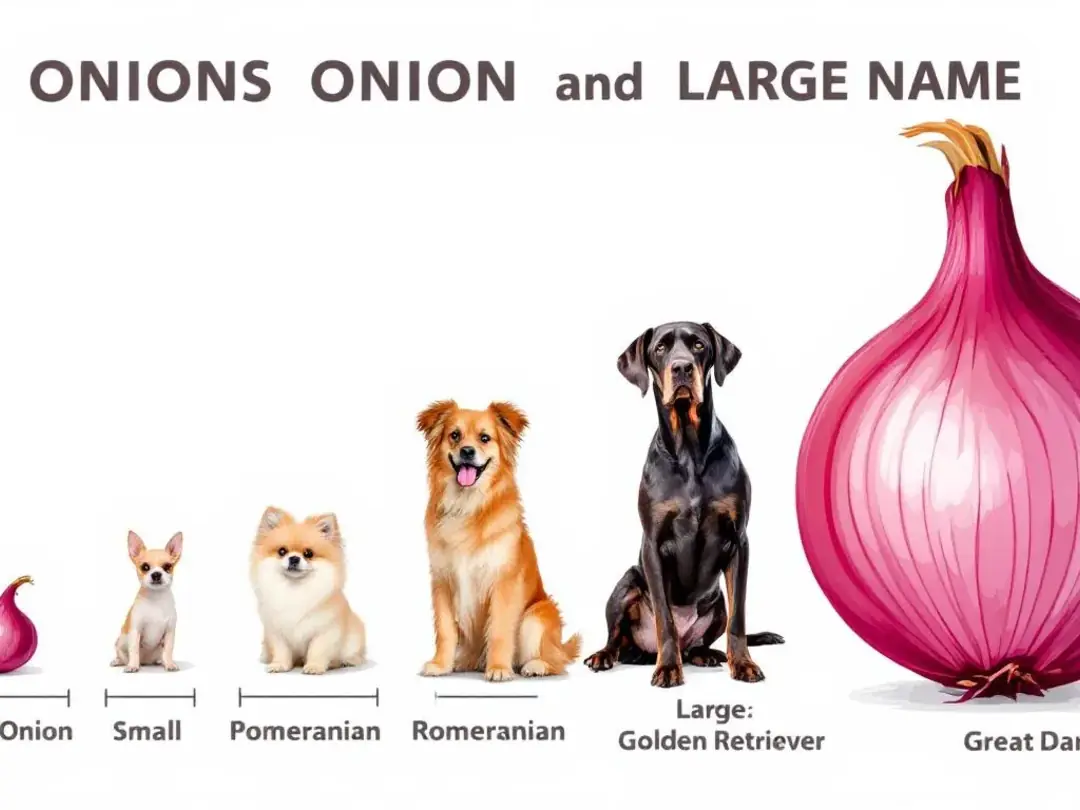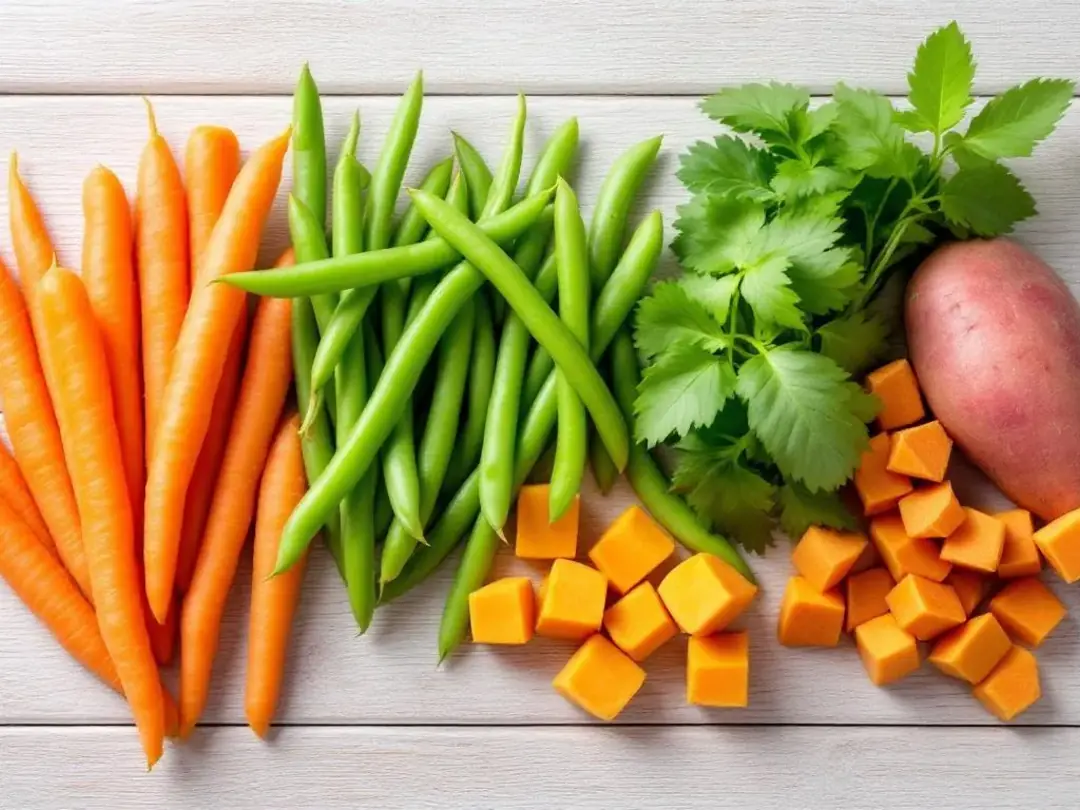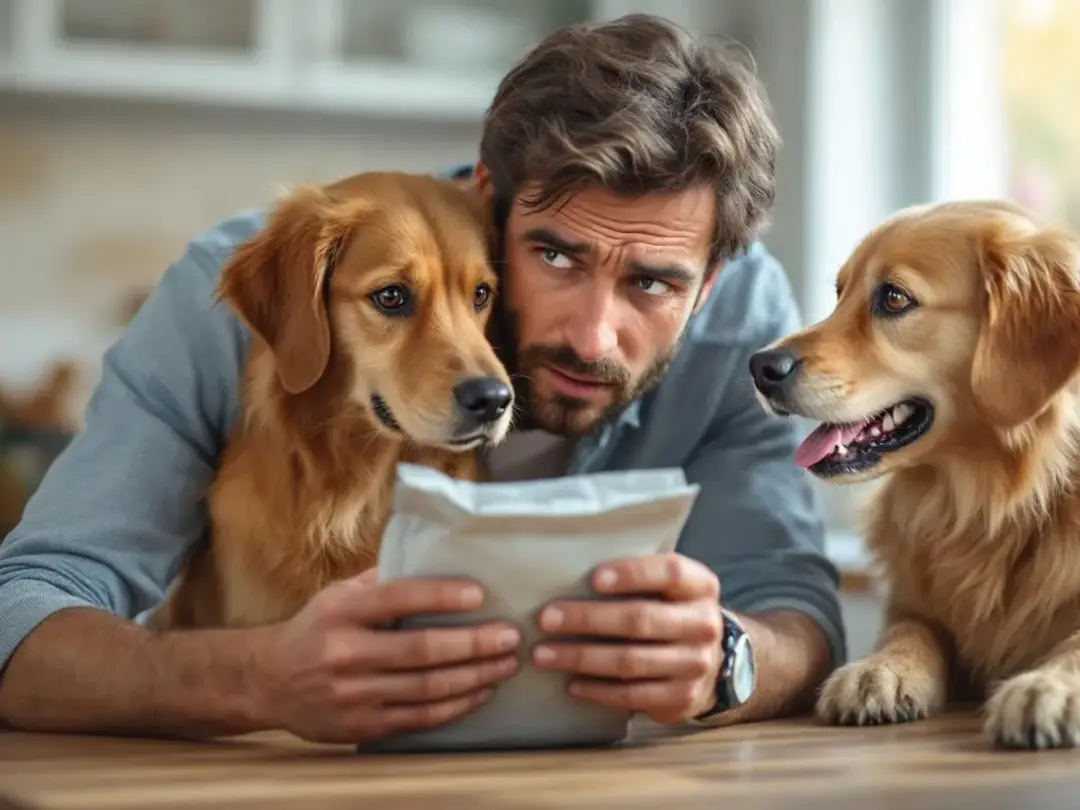Key Takeaways
-
Dogs should never eat onions in any form - raw, cooked, powdered, or dried - as they are highly toxic
-
Onions contain N-propyl disulfide which destroys red blood cells and causes hemolytic anemia in dogs
-
As little as 0.5% of a dog's body weight in onions can cause serious toxicity and potentially death
-
Symptoms may appear within 24 hours to several days after ingestion and require immediate veterinary care
-
Prevention is key - keep all onion products away from dogs and check ingredient labels in human foods
Introduction to Onion Toxicity
Onion toxicity is a critical issue every dog owner should be aware of. The question "can dogs eat onions?" comes up often, but the answer is always a firm no. Onions, whether raw, cooked, or in powdered form, are toxic to dogs and can lead to serious health problems, including onion poisoning. This is because onions belong to the Allium family-a group of plants that also includes garlic, chives, and leeks-all of which are toxic to dogs. Simply put, onions bad for dogs and should always be avoided.
The danger lies in a toxic compound called N-propyl disulfide, which attacks a dog's red blood cells. When dogs eat onions, this compound causes their red blood cells to break down, leading to a dangerous condition called hemolytic anemia. Even small amounts of onion can trigger vomiting and diarrhea, while larger or repeated exposures can result in life-threatening anemia. Onion toxicity is not limited to one type of onion or one method of preparation; all forms are equally toxic to dogs.
For pet owners, understanding the risks associated with onions is essential. By recognizing that onions are toxic to dogs and knowing how onion poisoning affects their red blood cells, you can take the necessary steps to keep your furry friend safe and healthy.
Why Dogs Should Never Eat Onions
Dogs should absolutely never eat onions-not even tiny amounts. This prohibition isn't negotiable, and here's why it matters so much.
All parts of the onion plant pose serious risks to dogs. The bulb, leaves, juice, and even onion powder contain the same toxic compounds. When people ask if dogs eat onions safely, the answer is always no. Onions belong to the Allium family, which includes garlic, leeks, chives, and shallots-all equally dangerous for dogs.
Dogs should not eat cooked onions, as cooking does not reduce their toxicity.
Processing doesn't make onions safer. Whether you're dealing with raw onions, cooked onions, or dried onion powder, the toxic effects remain the same. Even foods seasoned with onion powder pose serious health risks. Processed powders, such as onion powder, are especially dangerous due to their high concentration of toxins. That leftover onion casserole or those onion rings aren't just inappropriate treats-they're potential poison for your dog.
The key difference between humans and dogs lies in how their bodies process certain compounds. While we can safely enjoy onions in our favorite dishes, dogs lack the specific enzymes needed to break down the toxic elements. This fundamental biological difference makes even small exposures potentially life-threatening. Simply put, onions are bad for dogs in any form.


The Science Behind Onion Toxicity in Dogs
Understanding onion toxicity in dogs starts with a specific toxic compound: N-propyl disulfide. This sulfur-based chemical is harmless to humans but devastates a dog's system by attacking red blood cells directly. When N-propyl disulfide enters a dog's system, it disrupts normal cellular function and leads to significant health risks.
When a dog eats onions, N-propyl disulfide enters their system and bloodstream, beginning to destroy red blood cells through a process called hemolysis. These damaged cells can no longer carry oxygen effectively throughout the dog's body. The destruction creates Heinz bodies-abnormal clumps within the cells that signal severe damage.
This red blood cell destruction leads to hemolytic anemia, a serious condition where the body breaks down blood cells faster than it can produce new ones. Without enough healthy red blood cells, organs don't receive adequate oxygen. In severe cases, this oxygen deprivation can cause organ failure and death.
The process isn't immediate, which makes onion poisoning particularly dangerous. A dog might seem fine initially, but the toxic effects build up over time. This delayed reaction often leads pet owners to underestimate the severity of the situation, missing critical treatment windows.
All Types of Onions Are Dangerous for Dogs
Every variety of onion poses the same level of risk to dogs. Red onions, yellow onions, white onions, and sweet onions all contain identical toxic compounds. The color and flavor differences that matter to humans are irrelevant when it comes to canine safety.
Green onions, also called scallions, are equally problematic. Despite their different appearance and milder taste, they contain the same dangerous levels of N-propyl disulfide. Many pet owners mistakenly believe these are safer because they're often used as garnishes, but any amount can trigger onion toxicity.
The broader Allium family extends the danger beyond traditional onions. Leeks, chives, shallots, and even wild onions found during outdoor walks contain similar toxic compounds. If you're wondering whether dogs eat green onions safely, or any member of this plant family, the answer remains consistently no.
Fresh onions from your garden aren't any safer than store-bought varieties. The growing conditions, soil type, or organic status don't change the fundamental toxicity. Wild onions that dogs might encounter during hikes or in parks carry the same risks as cultivated varieties. Even a medium to large onion, which typically weighs around 100 grams, can be toxic to dogs.
Special Considerations for Puppies
Puppies face even greater risks from onion exposure due to their smaller body weight and developing systems. When puppies eat onions, they are at even greater risk because their size and immature organs make them more susceptible to toxins. When a puppy eats onions, toxic doses are reached much faster than in adult dogs. A few small pieces that might only cause mild symptoms in a large adult dog could be life-threatening for a puppy.
Young dogs also present unique diagnostic challenges. Puppies naturally sleep more and appear lethargic during normal development, making it harder to recognize early symptoms of onion toxicity. Their natural behavior can mask warning signs that would be obvious in adult dogs.
The developing immune and metabolic systems in puppies mean they may not handle the stress of hemolytic anemia as well as healthy adult dogs. Immediate veterinary care becomes even more critical when puppies are involved, as the window for effective treatment may be shorter.


How Much Onion Is Toxic to Dogs
The toxic threshold for onion poisoning begins at approximately 0.5% of a dog's body weight. This toxic amount is calculated based on the dog's body weight, meaning that even a small quantity relative to the dog's size can be dangerous. This seemingly small percentage translates to surprisingly modest amounts that can cause serious harm, and it is important to note that dangerous toxicity levels can be reached quickly if a dog eats onion.
For practical reference, consider these examples based on a dog's weight:
-
A 20-pound dog faces toxicity from roughly 1.6 ounces of onion (about 1/4 of a medium onion)
-
A 40-pound dog reaches dangerous toxicity levels at approximately 3.2 ounces (half a medium onion)
-
A 60-pound dog encounters risk at around 4.8 ounces (roughly 3/4 of a medium onion)
The amount of onion that can cause dangerous toxicity levels depends directly on the dog's weight, so even small amounts can be hazardous for smaller dogs.
One medium onion typically weighs about 8 ounces, making it easy to see how quickly dangerous amounts accumulate. Even more concerning, one tablespoon of onion powder equals the toxicity of one medium onion due to concentration during the drying process.
How much onion is toxic varies somewhat between individual dogs and breeds. Japanese breeds, including Akitas and Shiba Inus, show increased susceptibility to onion toxicity. These dogs may experience symptoms at lower doses than other breeds due to genetic factors affecting their red blood cell structure. If dogs eat onion in amounts exceeding these thresholds, they are at risk of poisoning.
Dogs with pre-existing health conditions, senior dogs, or those taking certain medications may also face increased risk. The remaining toxins can accumulate in dogs with compromised liver or kidney function, making even smaller exposures more dangerous.
Recognizing Signs of Onion Poisoning
The symptoms of onion toxicity typically develop in two phases, starting with gastrointestinal upset and progressing to more serious blood-related symptoms.
Initial symptoms usually appear within 24 hours of ingestion and include vomiting, diarrhea, and loss of appetite. Your dog might seem unusually tired or refuse their regular meals. These early signs often get dismissed as minor stomach upset, but they shouldn't be ignored when onion exposure is suspected.
As the toxic effects progress, physical symptoms become more apparent and concerning. Watch for these critical warning signs:
-
Pale gums or yellow-tinged gums indicating anemia
-
Weakness and unusual lethargy beyond normal tiredness
-
Rapid breathing or panting without exertion
-
Increased heart rate that you might notice during quiet moments
-
Stumbling, unsteadiness, or apparent confusion
-
Abdominal pain evidenced by hunched posture or reluctance to move
The most alarming symptom involves changes in urine color. When red blood cells break down rapidly, the released hemoglobin can turn urine red, brown, or dark orange. This symptom indicates severe hemolytic anemia requiring immediate emergency care.
Symptoms of onion toxicity can be delayed for several days after ingestion, making the connection between cause and effect less obvious. This delayed response often leads to missed diagnoses and delayed treatment, emphasizing why prevention remains so crucial.


What to Do If Your Dog Eats Onions
If your dog has eaten onions, time becomes your most important ally. Stay calm and take immediate action-panic won't help your furry friend, but quick thinking will.
First, contact your veterinarian or the Pet Poison Helpline immediately. Even if your dog appears normal, toxic effects may be building in their system. Professional guidance helps determine whether you're dealing with an emergency requiring immediate clinic visits or a situation that needs careful monitoring.
Gather important information before making the call. Note how much onion your dog consumed, what type it was (raw, cooked, powdered), and when the ingestion occurred. If possible, estimate your dog's body weight and observe any current symptoms. This information helps veterinary professionals assess the severity and recommend appropriate action.
Do not induce vomiting unless specifically instructed by a veterinary professional. While this might seem like logical first aid, the timing and method matter significantly. Induced vomiting only helps if done within a specific timeframe and can sometimes cause additional complications.
Even if your dog seems perfectly normal after eating onions, don't assume everything is fine. The delayed nature of onion toxicity means symptoms might not appear for 24 to 72 hours. Schedule a veterinary check-up and monitor your dog closely during this critical period.
If possible, secure any remaining onion products to prevent additional exposure. Take photos of packaging or write down ingredients lists to help veterinary professionals understand exactly what your dog consumed.
Veterinary Treatment for Onion Toxicity
Professional veterinary treatment for onion poisoning involves several diagnostic and therapeutic steps designed to minimize damage and support recovery. The expertise and procedures found in veterinary medicine are essential for accurately diagnosing and effectively treating onion poisoning in dogs.
Initial diagnosis typically involves blood work to assess the extent of red blood cell damage. Veterinarians look for evidence of hemolytic anemia, check for Heinz bodies on a blood smear, and evaluate overall organ function. These tests help determine the severity of poisoning and guide treatment decisions.
Early intervention might include inducing vomiting if the ingestion was recent enough for this to be effective. Activated charcoal may be administered to help absorb remaining toxins in the digestive system before they enter the bloodstream. However, these interventions are only beneficial within specific timeframes after ingestion.
Supportive care forms the backbone of onion toxicity treatment. This typically includes intravenous fluids to maintain hydration and support kidney function, oxygen therapy if breathing is compromised, and careful monitoring of vital signs. Most dogs require hospitalization for at least 24 to 48 hours for observation.
In severe cases where hemolytic anemia becomes life-threatening, a blood transfusion may be required as a critical intervention. This intensive treatment replaces damaged red blood cells with healthy ones, potentially saving lives in critical situations. Some dogs may require multiple blood transfusions depending on the extent of cell destruction.
Recovery time varies based on several factors including the amount of onion consumed, how quickly treatment began, and the individual dog's overall health. Most dogs recover fully with prompt, appropriate treatment, but recovery can take several weeks for severely affected animals.
Prevention Strategies for Pet Owners
Preventing onion toxicity requires consistent vigilance and some practical household management strategies. The most effective way to prevent onion poisoning is through vigilant storage and ingredient awareness, ensuring your dog never has access to onions or onion-containing foods. The good news is that prevention is entirely achievable with the right approach.
Storage plays a crucial role in prevention. Keep onions and all onion-containing foods in secure cabinets or areas where your dog cannot access them. Remember that dogs can be surprisingly resourceful when food smells good to them, so "dog-proof" means truly inaccessible, not just on a high shelf.
Ingredient awareness becomes essential when sharing human food with your dog. Many processed foods contain onion powder or onion flavoring that isn't immediately obvious. Baby food, soups, seasoning mixes, and prepared sauces often contain hidden onion ingredients. Reading labels carefully protects your dog from accidental exposure.
Family education ensures everyone in your household understands the risks. Visitors, children, and pet sitters need to know that dogs onions don't mix under any circumstances. Consider posting a simple reminder list of dangerous foods in your kitchen where everyone can see it.
Garbage security prevents scavenging opportunities. Use secure lids on trash cans and dispose of onion scraps where your dog can't reach them. Even small amounts from food preparation can be dangerous, so treat all onion waste as a potential hazard.
Outdoor vigilance matters during walks and hikes. Many areas have wild onions or other Allium plants that smell appealing to dogs. Training your dog to "leave it" on command provides an essential safety tool for these situations.
To prevent onion toxicity effectively, consider creating "dog-safe zones" in your kitchen during food preparation. Use baby gates or crates to keep your dog away while you're cooking with onions, reducing the risk of dropped pieces or counter surfing incidents.
The Risks of Dogs Eating Human Foods: Beyond Onions
Feeding dogs human foods might seem harmless or even loving, but it can actually put your furry friend at serious risk. While onions are one of the most dangerous foods for dogs, the list of toxic human foods doesn't stop there. Many everyday ingredients found in our kitchens-especially those hidden in favorite dishes-can be harmful or even fatal to dogs.
When a dog eats onions, whether it's raw onions, cooked onions, green onions, or even a sprinkle of onion powder, the consequences can be severe. The toxic compound N-propyl disulfide in onions attacks your dog's red blood cells, leading to onion poisoning and potentially life-threatening hemolytic anemia. This risk isn't limited to just one type of onion-yellow onions, red onions, sweet onions, and even onion rings or onion casserole can all trigger onion toxicity in dogs. Even small amounts, such as those found in baby food or processed human foods, can be enough to cause harm, especially if your dog has eaten onions repeatedly or in large quantities.
But onions aren't the only human food that's toxic to dogs. Foods like chocolate, grapes, raisins, and macadamia nuts are also highly dangerous. Even a small bite of these foods can lead to severe cases of poisoning, requiring immediate veterinary attention. The problem is that many human foods contain hidden ingredients-like onion powder or green onions-that are toxic to dogs, making it easy for accidents to happen if you're not vigilant.
If your dog eats something it shouldn't-especially if you suspect onion poisoning-don't wait for symptoms to appear. Contact your vet immediately or call the Pet Poison Helpline for expert advice. In some cases, your veterinarian may recommend inducing vomiting or administering activated charcoal to help remove the toxic compound from your dog's system. For severe cases of onion toxicity in dogs, treatments like blood transfusions may be necessary to replace damaged red blood cells and support recovery.
Prevention is always the best approach. To prevent onion toxicity and other food-related emergencies, keep all onions and onion-containing foods-like onion rings, onion casserole, and even leftovers-well out of your dog's reach. Be especially cautious with foods that might contain hidden onions, such as baby food, soups, or sauces. Always check ingredient labels before sharing any human food with your dog, and remember that even cooked onions or processed powders are just as toxic as raw onions.
Stick to a balanced dog food diet and offer only dog-safe treats, like carrots or green beans, to keep your pet healthy. If you have Japanese breeds or puppies, be extra cautious, as they can be more sensitive to onion toxicity. By staying informed and taking simple precautions, pet owners can prevent onion poisoning and keep their dogs safe from the many hidden dangers lurking in human foods. Your vigilance is the best way to ensure your dog enjoys a long, healthy life-free from the risks of toxic foods.


Safe Vegetable Alternatives for Dogs
While dogs can't safely eat onions, plenty of other vegetables make healthy treats that add variety to your dog's diet without the risks.
Carrots provide excellent nutrition and natural dental benefits. Raw carrots offer satisfying crunch that many dogs enjoy, while cooked carrots are easier to digest. Both forms provide beta-carotene, fiber, and natural sweetness that most dogs find appealing.
Green beans make fantastic low-calorie treats, especially for dogs watching their weight. Fresh, frozen, or cooked green beans (without seasoning) provide vitamins and fiber. Their satisfying crunch and mild flavor make them acceptable to even picky eaters.
Sweet potatoes offer rich flavor and substantial nutrition when cooked and served plain. They're packed with vitamins A and C, fiber, and natural sweetness that dogs love. Always serve cooked sweet potatoes, as raw ones can be difficult to digest.
Broccoli florets provide vitamin K and antioxidants, though they should be given in small amounts. Some dogs love the texture and mild flavor, while others need encouragement. Start with tiny pieces to gauge your dog's interest and digestive tolerance.
Other safe options include cucumber slices for hydration, small pieces of cooked squash for vitamins, and frozen peas for a cool summer treat. Always introduce new vegetables gradually and serve them without any seasoning, butter, or additives.
Remember that vegetables should supplement, not replace, a balanced dog food. Most adult dogs thrive when treats and extras make up no more than 10% of their total daily calories.
Dog's Diet and Nutrition: Supporting Your Pet's Health
A well-balanced diet is the foundation of your dog's health and happiness. As a responsible pet owner, it's important to ensure your furry friend receives all the nutrients they need-without exposing them to harmful foods like onions. Onion toxicity is a preventable risk, and the best way to avoid it is by keeping onions and related foods out of your dog's diet entirely.
Instead of sharing foods that contain onions or other toxic ingredients, focus on providing your dog with high-quality dog food formulated to meet their nutritional needs. You can also supplement their meals with safe, healthy treats such as carrots, green beans, and sweet potatoes. These vegetables offer valuable vitamins and fiber without the toxic effects associated with onions.
should dogs eat onions
dogs eat onions
dogs eat cooked onions
dogs eat green onions
cooked onions
dogs eat
dog has eaten onions
dog's diet
dog has eaten
When introducing any new food to your dog, do so gradually and monitor for any adverse reactions. If you're ever unsure about what's safe for your dog to eat, consult your veterinarian for guidance. By prioritizing your dog's diet and nutrition and steering clear of onions, you can help prevent onion toxicity and support your pet's long-term well-being.
FAQ
Can dogs eat foods cooked with onions if the onions are removed?
No, even foods that had onions removed during cooking can still contain toxic compounds that have leached into the food. The N-propyl disulfide and other harmful substances dissolve into the cooking liquid and permeate throughout the dish. The entire dish should be avoided, regardless of whether visible onion pieces remain.
Is onion powder more dangerous than fresh onions?
Yes, onion powder is more concentrated than fresh onions, making it more toxic per gram. The dehydration process removes water while concentrating the toxic compounds. Just one tablespoon of onion powder equals the toxicity of one medium fresh onion, making it particularly dangerous in small amounts that might seem harmless.
How long after eating onions do symptoms appear in dogs?
Symptoms can appear within a few hours but are more commonly seen 1-3 days after ingestion as it takes time for the red blood cell damage to become apparent. This delayed onset makes onion poisoning particularly dangerous because owners may not connect the symptoms to the earlier onion exposure, potentially delaying crucial treatment.
Are some dog breeds more sensitive to onion toxicity?
Yes, Japanese breeds like Akitas and Shiba Inus have a genetic predisposition that makes them more susceptible to onion poisoning at lower doses than other breeds. These dogs have inherited red blood cell characteristics that make them more vulnerable to oxidative damage from onion compounds. However, all dogs face serious risks regardless of breed.
Can small amounts of onion build up to toxic levels over time?
While acute poisoning from a single large dose is more common, repeated small exposures to onions can potentially cause cumulative damage to red blood cells over time. This chronic exposure may lead to gradual onset anemia that's harder to detect initially but can still become life-threatening. This is why no amount of onion is considered safe for regular consumption.
Conclusion and Final Thoughts for Pet Owners
In summary, onions pose a serious threat to your dog's health, whether they are raw onions, cooked onions, or even onion powder hidden in your favorite dishes. If your dog eats or has eaten onions, the risk of onion toxicity is real, and symptoms of onion toxicity can develop quickly or over several days. Most dogs can recover from onion poisoning with prompt veterinary care, but prevention is always the safest approach.
As a pet owner, it's your responsibility to prevent onion toxicity by keeping all forms of onions out of your dog's reach and being vigilant about the ingredients in both human and dog food. If you suspect your dog has eaten onions or notice symptoms of onion toxicity-such as vomiting, diarrhea, pale gums, or lethargy-contact your vet immediately. Quick action can make all the difference in your furry friend's recovery.
By staying informed and proactive, you can protect your dog from the dangers of onions and ensure they enjoy a long, healthy, and happy life by your side. Remember: when it comes to onions, it's always better to be safe than sorry.






